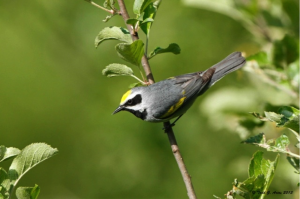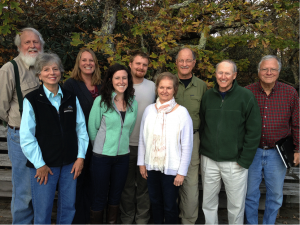Audubon North Carolina has 10 amazing chapters across the state that help put a local focus on bird preservation and conservation issues. In this special blog series, we’ll focus on a chapter each month to learn more about their history, what they are working on, and to increase the statewide understanding of special ecosystems and habitats. Each month will include a series of posts about each chapter including a post from our biologists that will share a unique research project that is happening in the chapter’s geographic footprint.
This month, we get to know the Highlands Plateau Audubon Society (HPAS). Please welcome Avary Doubleday, Vice President of HPAS, to learn more about our chapter serving parts of Western North Carolina.
History of Highlands Plateau Audubon Society
The Highlands Plateau Audubon Society or HPAS was founded in 1996 by a group of active local birders in Highlands and Cashiers, NC. As time passed we realized that we were drawing people from a larger area, so we increased our membership area to include Sapphire, Glenville, Scaly Mountain and Franklin.
Since 2009, we have expanded our field trips to several outings per month, May through September; our educational outreach to include local schools; and our newsletter and website. We have also worked to improve the quality of our summer evening programs, including a family-friendly “Owl Prowl.”
Our chapter is proud of the strong relationships we’ve developed in the community including partnerships with the local schools and Western Carolina University, garden clubs, the Highlands-Cashiers Land Trust, the Highlands Biological Station, the Highlands Plateau Greenway and other environmental organizations in the area.
Membership
We have more than 150 local members and another 60 members of the National Audubon Society living in our area.
Annual Activities
During the “Season” (May through September) we host six to eight evening programs for the community, featuring stimulating scientific programs, nature movies (My Life As a Turkey was a big hit!), and presentations by our members sharing their birding trips (e.g., to South Africa) and excellent wildlife photography. Saturday field trips are held several times a month, with the first trip of each month geared toward beginning birders. We provide binoculars and help our attendees with field guides. Our newsletter, The Mountain Warbler, is published every other month throughout the year.
Special Projects We Are Working On
Along with seasonal field trips, our Education Committee members work with local schools throughout the year to organize outings, classroom presentations and habitat projects. A publicity committee works with local newspapers to ensure that our programs and field trips are reported frequently during the season.
In 2014, expanding our action for birds and wildlife in Western North Carolina, we took on two new scientific initiatives:
- Partial support of an intern from Western Carolina Universitystudying Golden-winged Warblers
- A cavity-nesting bird project monitoring more than 100 new nest boxes to evaluate the selective effectiveness of various-sized cavity holes.
What Birds Can be Seen in Western North Carolina
Birds frequenting higher elevations (4,000 feet and above) are what you can expect to spot during a trip to the Highlands plateau. In the summer, you can see Black-throated Green Warblers, Black-throated Blue Warblers, Canada Warblers, Scarlet Tanagers and Veery. If you’ve got a birdfeeder, expect to enjoy some Rose-breasted Grosbeaks, Red-breasted Nuthatches and Red Crossbills, too. During a typical birding trip, you might see as many as 50 different avian species.
Where Are the Best Birding Spots in our Area
Some of the best birding can be found along Flat Mountain Road, Ranger Falls Trail and adjacent National Forest land. More dependable hot spots can be found along Turtle Pond Road and Rich Gap Road in Horse Cove. In the town of Highlands, a visit to the Highlands Botanical Gardens with their trail system and road to Sunset Rock is always a great way to sample our local birds. In September, a short hike up Whiteside Mountain will give you a breathtaking front row seat for the hawk migration, as the kettles ride thermals rising 700 feet up the mountain’s sheer face.
Kyle Pursel, Ann Campbell, George Kaye, Don Shure and Mike Kaiser.
Join This Chapter
Our membership application form is available on our web site at www.highlandsaudubonsociety.org or you may contact our membership chair, Pat Strickland at akabebe1@yahoo.com. For all members who join at the level of Friend ($100) or above, we will pay your National Audubon Society dues upon request. Our hospitality committee hosts an annual Thank You party for members at the Friends and Above level along with members of our board. This event, hosted at a member’s home, features wine and heavy hors d’oeuvres. We also host a potluck supper to kick off each season and a Membership Picnic in late summer.






